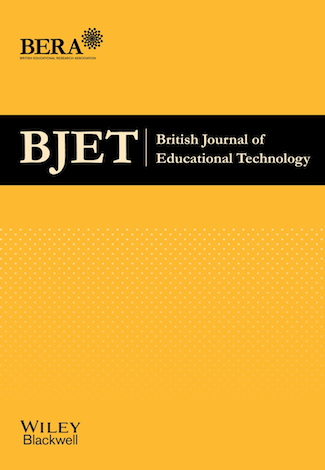
Moving mathematics out of the classroom: Using mobile technology to enhance spontaneous focusing on quantitative relations
ARTICLE
Jake McMullen, Minna M. Hannula‐Sormunen, Mikko Kainulainen, Kristian Kiili, Erno Lehtinen
British Journal of Educational Technology Volume 50, Number 2, ISSN 0007-1013 e-ISSN 0007-1013 Publisher: Wiley
Abstract
Spontaneous focusing on quantitative relations (SFOR) has been shown to be a strong predictor of rational number conceptual development in late primary school. The present study outlines an intervention program that examines the possibilities to enhance late primary school students' SFOR tendency. The intervention program harnessed mobile technology in order to allow students to explore and identify quantitative relations in their everyday environment, including situations outside of the classroom. A total of 38 thirteen‐year‐olds from two classrooms participated in the seven‐week long quasi‐experimental study. One classroom spent five lessons over five weeks participating in activities which involved uncovering, defining and describing multiplicative relations in their everyday surroundings. In comparison to a business‐as‐usual control group, results show the intervention to be successful in enhancing SFOR tendency. These results suggest that it is possible to utilize mobile technologies to enhance students' awareness of the possibilities to use quantitative relations as explicit targets of focusing and reasoning in nonexplicitly mathematical situations.
Citation
McMullen, J., Hannula‐Sormunen, M.M., Kainulainen, M., Kiili, K. & Lehtinen, E. (2019). Moving mathematics out of the classroom: Using mobile technology to enhance spontaneous focusing on quantitative relations. British Journal of Educational Technology, 50(2), 562-573. Wiley. Retrieved August 12, 2024 from https://www.learntechlib.org/p/208308/.
